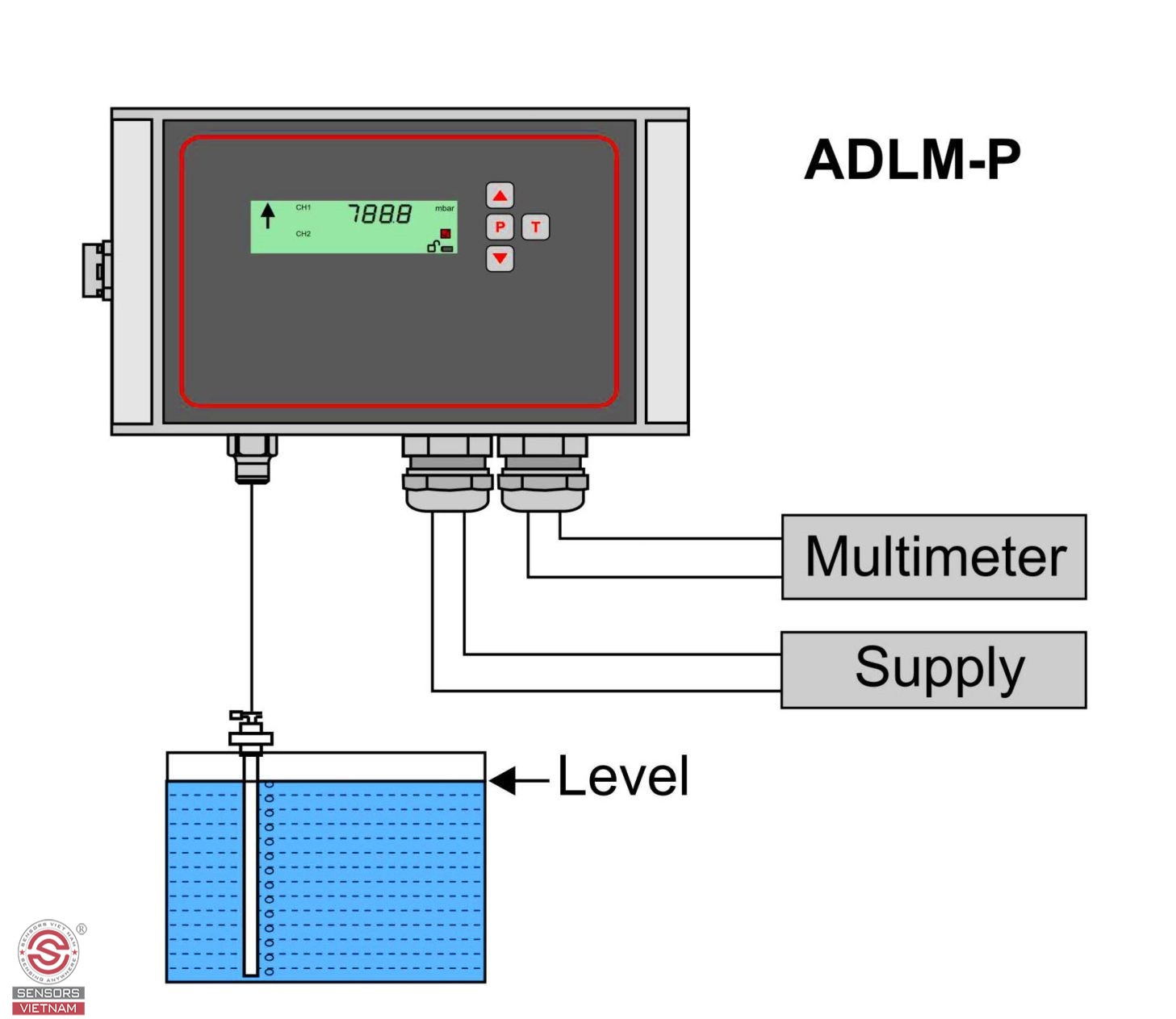CUSTOMER SERVICE
www.sensors.vn
Admin@sensors.vn
www.cambien.com.vn
Date 25/Sep/2025 at 11:08 AM - View: 38

A bubbling-through pressure transducer is a level measurement system that uses compressed air to measure the hydrostatic pressure of a liquid in a tank. Compressed air is pushed through a submerged tube until it creates bubbles at the liquid's surface, and the back pressure required for this is measured by the transducer. This system is ideal for corrosive, aggressive, or viscous liquids where traditional contact sensors are impractical or too costly, as it provides a non-contact measurement of the liquid level.
The hose pump generates a pressure in the bubbling-through tube (pulse). At the end of the tube air escapes when the hydrostatic pressure is reached (density x filling height). The existing pressure is transfered continously to the system. After each break the process repeats again. If the level of the liquid changes during the break, the output signal follows because the built-up pressure in the tube changes at the same time.
The ADLM-P pressure transmitter of MUELLER - Germany allows liquids such as acids, alkalis, or even hot and abrasive media to be measured simply and accurately.
Applications in all areas where conventional level measurement is not possible or too expensive can thus be solved easily and cost-effectively.
The bubble-in method is used, which utilizes the hydrostatic pressure in pneumatic level measurements of liquids.
For the measurement, an air flow is directed into a bubble-in tube that reaches to the bottom of the container to be measured. The air pressure rises until it can withstand the liquid column in the container. The ADLM-P pressure transmitter measures the pressure, which is proportional to the fill level of the liquid, and converts it into an electrical signal of 4...20 mA, which is used for further processing.
Areas of application include sewage treatment plants and pumping stations, in the construction of wells and special vehicles for water and fuel tanks, as well as in the chemical industry and often in food production.
Advantages of the bubble method over measuring methods with other operating principles:
• Level measurement possible in all liquids, regardless of viscosity
• Measuring device has no contact with the medium [disadvantage of immersion probes]
• Simple mechanical design [disadvantage of pressure sensors]
• Cost-effective solution [disadvantage of radar technology]